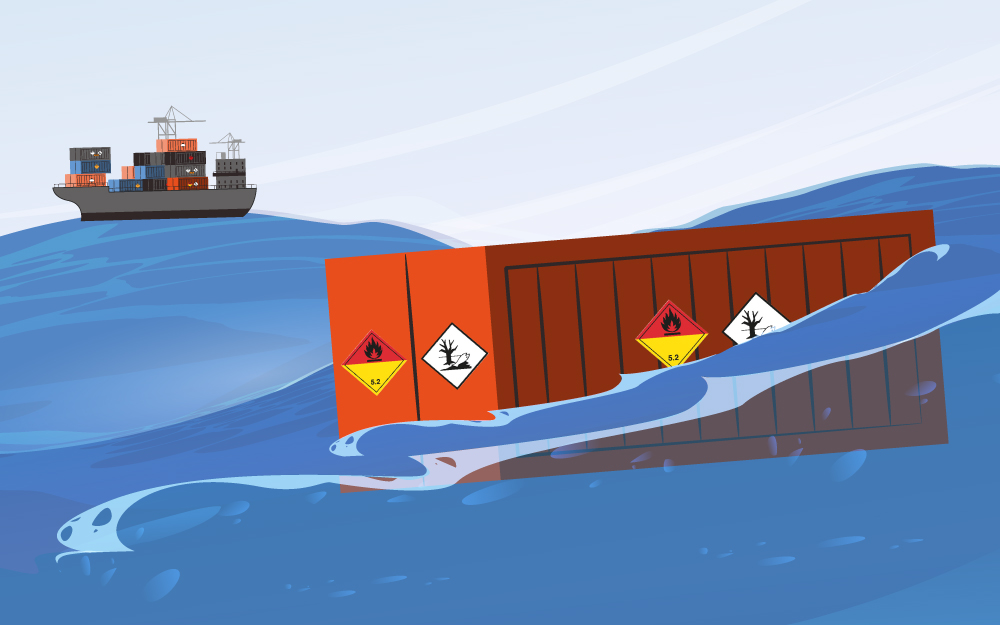Immersion of 3 months in seawater? Is what I am reading in the IMDG correct?

Let’s start with numbers.
12,000 is the number of containers lost at sea. Yes, right: 12,000. Containers.
In March 2014, the Office of National Marine Sanctuaries, an NOAA (National Oceanic and Atmospheric Administration) department, published a report about the containers lost at sea all around the globe.
According to the report, this transport mode had grown eight times in the previous 30 years.
Nowadays, containers shipped on freighters are about 200 million every year.
While reading this sentence, 5 to 6 million containers are traveling on our oceans around the globe. Averagely every hour, one of these containers slips off from the cargo ship it is loaded on: it is estimated that about 1,000/1,500 “pieces” are lost at sea every year.
This is mainly because – while this section of the market has increased quickly – the protocols of safety and the fixing methods have not evolved adequately. The reasons for these incidents are mostly bad weather conditions, inadequate or wrong load-fixing systems, and mistakes (wanted or not) in the weight calculation when the freighter is loaded.
It is easy to understand how these enormous containers, and the goods contained within, are another source of pollution for the waters of our planet – especially when on the seabed.
What is more difficult to imagine as a consequence of these incidents is that, if they are full or empty, or if the inside goods prevented the air from going out and the water from going in, working as a buoyancy reserve, lost containers may float for weeks or even months before sinking.
This represents an impact hazard for all the ships that may find one of these containers floating on their route, but on the other hand, it gives a further opportunity to recover the container more cheaply as long as it stays on the surface of the sea.
Recovery operations, though, are performed rarely, because, in most cases, rescuing the goods would not be profitable. Recovering them would take a big effort, without having any guarantee on the residual value of the content (which most probably is damaged by water).
What happens if one of the lost containers carries dangerous goods?
Like, for instance, corrosive or toxic material? In this case, recovery operations would be necessary, and we should act immediately to avoid an ecological disaster.
Containers holding goods belonging to one of the 9 danger classes, defined as such according to the IMDG, the Regulation for the transport of such goods by sea, must be signaled with placards and markings that show clearly the nature of the danger.
Placards and markings are adhesive (99.8% of the time) and “shall be such that this information will still be identifiable on cargo transport units and bulk containers surviving at least three months’ immersion in the sea.” (IMDG, chapter 5.3.1.1.1.2.). At the end of this article, the reason for this demand/requirement is finally clear. If a container floated on the open sea and after a short time “lost” its danger signaling and marking, its recovery and the proper disposal of the contained goods could be considered as a “normal” operation and therefore not urgent. Suppliers you rely on must be able to show and declare the compliance of these products with the Regulation’s requests: now we know why.
Hence: for the safety of our seas, our environment, and us all, do not buy “any kind of” placards and markings to signal your containers with dangerous goods. Rely only on producers and suppliers who declare to comply with the related Regulations to supply the packaging and signaling material you need.
SHIP SAFE, THINK SERPAC!